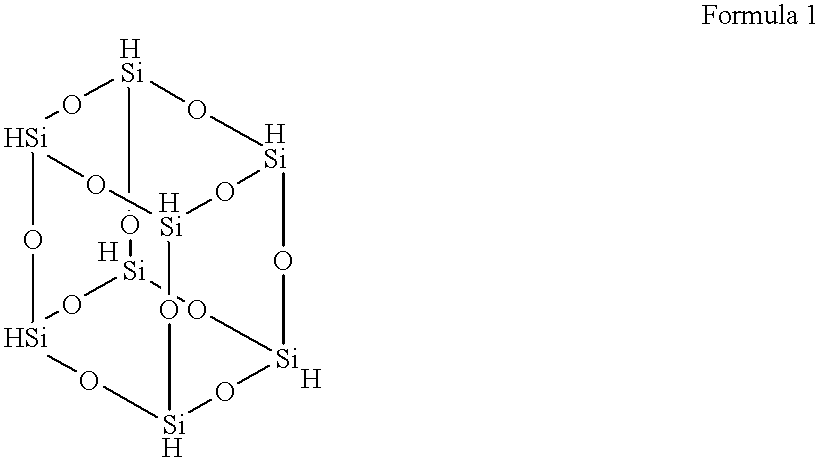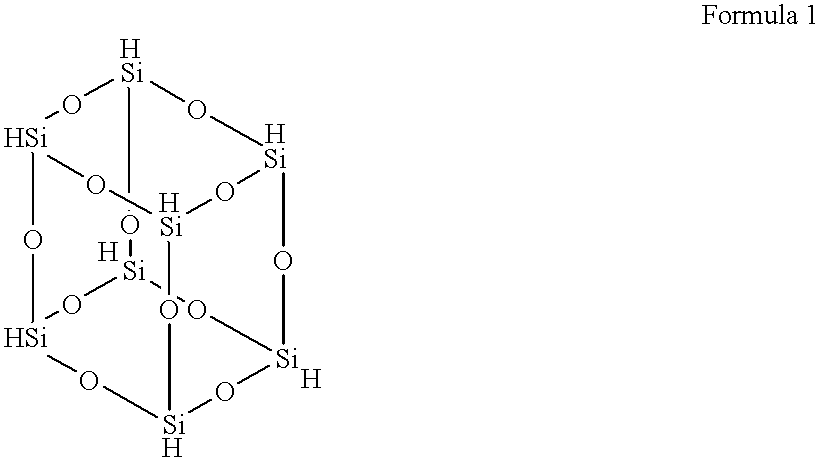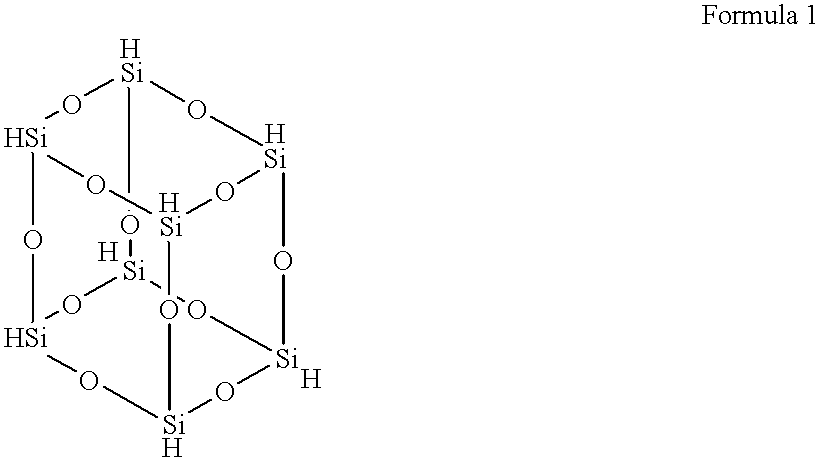Hydrogenated octasilsesquioxane-vinyl group-containing copolymer and method for manufacture
- Summary
- Abstract
- Description
- Claims
- Application Information
AI Technical Summary
Benefits of technology
Problems solved by technology
Method used
Image
Examples
working example 1
2.12 g (0.005 mol) Of hydrogenated octasilsesquioxane was dissolved in 100 mL of toluene in a 200 mL flask. 0.97 g (0.005 mol) Of divinyltetramethyldisiloxane was added to this solution, and 0.05 g of a toluene solution (containing 200 ppm platinum by weight) of zero-valent platinum complexed with divinyltetramethyldisiloxane was added. After this, the mixture was heated to 55.degree. C. while being mixed under an argon gas flow, and the temperature was held at 55.degree. C. for 20 hours. Upon completion of the reaction, the product was cooled to room temperature, and the organic solvent was distilled off under reduced pressure. The resulting copolymer was soluble in toluene, chloroform, and methyl isobutyl ketone. The characteristics of this copolymer were as follows.
.sup.29 Si-NMR: d 8.44, d (-a and b-ethylene-Me.sub.2 SiO-) d 65.60 (ethylene-SiO.sub.3 / 2 --) d-84.61 (HSiO.sub.3 / 2 --). This compound was basically a copolymer in which hydrogenated octasilsesquioxane was bonded with ...
working example 10
1.5 g (0.035 mol) Of hydrogenated octasilsesquioxane was dissolved in 100 mL of toluene in a 200 mL flask. 0.455 g (0.0035 mol) Of divinylbenzene and 0.05 g of a toluene solution (containing 200 ppm platinum by weight) of zero-valent platinum complexed with divinyltetramethyldisiloxane were added to this solution. After this, the solution was heated to 60.degree. C. while being agitated under an argon gas flow, and the temperature was held constant for 20 hours. Upon completion of the reaction, the solution was cooled to room temperature, and the organic solvent was distilled off under reduced pressure. A polysiloxane was obtained in the form of a waxy, white solid. This copolymer was soluble in toluene, chloroform, and methyl isobutyl ketone. The characteristics of this copolymer were as follows. .sup.29 Si-NMR: d 8.44, d (-a and b-ethylene-Me.sub.2 SiO-) d 65.60 (ethylene-SiO.sub.3 / 2 --) d-84.61 (HSiO.sub.3 / 2 --)
working example 11
The blend ratio of the divinyl group-containing compound (B) to the hydrogenated octasilsesquioxane (A) and the type of divinyl group containing compound (B) were varied as shown in Table 1, and the other conditions are the same as in Working Example 10.
PUM
| Property | Measurement | Unit |
|---|---|---|
| Length | aaaaa | aaaaa |
| Substance count | aaaaa | aaaaa |
| Substance count | aaaaa | aaaaa |
Abstract
Description
Claims
Application Information
 Login to view more
Login to view more - R&D Engineer
- R&D Manager
- IP Professional
- Industry Leading Data Capabilities
- Powerful AI technology
- Patent DNA Extraction
Browse by: Latest US Patents, China's latest patents, Technical Efficacy Thesaurus, Application Domain, Technology Topic.
© 2024 PatSnap. All rights reserved.Legal|Privacy policy|Modern Slavery Act Transparency Statement|Sitemap



